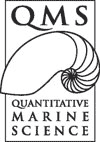
Modern Mathematical Methods in Physical Oceanography Summer School
Breckenridge, CO, USA. August 13-22, 2006
This ten day course offered by the United States NSF gathered together some of the leading researchers in modern mathematical methods in oceanography to present an intense series of lectures and tutorials. Around fifty oceanography and mathematics students from around the world attended the course, bringing with them diverse backgrounds in pure mathematics, observational oceanography, theoretical fluid dynamics and engineering to name but a few.
The course itself was divided up into lectures in the morning, an afternoon computer tutorial and then another lecture in the early evening. Each lecturer examined a separate topic, split into two or more lectures, and often included practical work components to be completed in the tutorials. These lectures covered a diverse range of topics including: turbulence, dynamical systems theory, stochastic differential equations, numerical analysis, control and sensitivity theory and information theory. These techniques were applied to various areas of physical oceanography, such as finite difference models, ocean large scale circulation, turbulence and mixing effects and phenomena like El Nino.
Lectures were almost always well structured and presented clearly, with notes and other material easily accessible on the wireless intranet provided in the lecture room. Questions from the students were welcomed, but unfortunately sometimes competing opinions amongst the lecturers turned some presentations into extended theoretical discussions, that were much more involved and technical than the material being taught. Also, as is inevitable with such a diverse range of material covered, some topics were more accessible to some students than others, and occasionally almost incomprehensible to those without a very strong background in the particular mathematical method being discussed. Some lecturers used their places as an opportunity to present their ongoing research, which was often very technical and involved. While fascinating, this was occasionally frustrating, as the research was very specific in its scope and the results not yet validated. It was felt amongst the students that these lectures may have been better spent explaining the techniques of the research in broader and more established fields rather than minutia of specific research. This was not the norm, however, and overall all students agreed that they gained a lot from the course.
In particular I enjoyed the discussion presented by Eli Tziperman on the underlying physics of the El Nino-Southern Oscillation, utilising chaotic jumping between several 'stable' states to explain the irregularity in the period of the cycle (ie. it maybe 4 years in some instances but 5 or 3 in others). This dynamical systems discussion segued nicely into that given by Henk Dijkstra who discussed the ocean circulation as a dynamical system and its implications on the stability and variability of large scale flows. David Marshall was another speaker who was a pleasure to listen to. He discussed the stratified wind driven circulation, and explained clearly how the oceanic gyres and their westward intensification can be explained using vorticity arguments in both stratified and unstratified systems, as well as dealing with eddies between gyres and boundary current separation. All of these discussions were very rigorous in their mathematical derivation.
Because students and speakers were all accommodated at the conference center, and all meals were taken together, there was plenty of opportunity to get to know the speakers and fellow students. This was very enjoyable, and being able to casually discuss my work with world class researchers was a particularly important aspect of the summer school and built valuable future contacts.
Overall this summer school vastly improved my understanding of the place of mathematical methods in physical oceanography, and its ever growing number of applications. It also allowed me to appreciate the important role of applying different methods to a problem, particularly in physical oceanography where the underlying dynamics are only partially understood. This was best exemplified in the 'good guys and bad guys' camps taken by the lecturers regarding the two schools of thought in explaining the period of ENSO, both of which had equally compelling arguments. In addition, it gave me an opportunity to dust off my mathematical methods and begin to think critically and dynamically about my PhD problem, which before the school I had been treating as an empirical problem. It has given me the inspiration and at least an indication of the tools I will need to use to expand my research beyond a discussion of an interesting physical relationship, and into a dynamical explanation for the phenomena I am observing.
Information, lecturer profiles, course notes and tutorials can all be accessed online at the Collaborations in Mathematical Geosciences website.